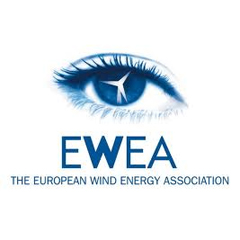A recent report by the European Wind Energy Association argues that EU electricity market rules must reflect the energy generation mix of the future, and help usher in a flexible power system with a large-scale uptake of wind power and other renewable energy sources. A number of recommendations have been made – many of which have far-reaching ramifications for wind. PES presents an exclusive extract.
Wind power is capable of supplying a share of European electricity demand comparable to the levels currently being met by conventional technologies such as fossil fuels, nuclear and large hydro power. The envisaged share of around 14% of electricity demand (up from some 6.5% currently) met by wind in 20201, and the 2050 scenarios from the European Commission showing wind energy as the key generating technology – providing between 31.6% and 48.7% of electricity production – require market rules to adapt to the generation mix of the future. The envisaged level of wind energy penetration will require cooperation among decision makers and stakeholders in the electricity sector, to make the necessary changes to a European energy market that has been developed with traditional centralised power plants in mind.
Main findings
1. Structural market distortions remain the main obstacle to creating an internal energy market and integrating wind energy. The level of liberalisation of European electricity markets remains low while large incumbents, high market concentration, continued massive subsidies to fossil fuels and nuclear energy and regulated prices remain the rule rather than the exception.
2. Integration of large amounts of wind energy in a cost efficient manner requires changing the current market arrangements. Market rules are not currently designed to facilitate the integration of wind energy. This creates significant challenges for its cost efficient integration into the market. Integration costs are not a consequence of the technology capability itself, but due to existing rigid market rules and institutional frameworks that were never designed with wind power, or other variable generation technologies, in mind. This prevents the full and cost-efficient exploitation of their capabilities.
3. The 2009 Renewable Energy Directive is based on the rationale that a positive framework for renewable energy development is necessary due to a number of market and regulatory failures or imperfections. Thus, support mechanisms for wind power and other renewables should be seen in the context of an unfinished liberalisation and as compensation for the numerous market failures that arise from an internal market that is fragmented, dysfunctional and far from fully developed. Prevailing market distortions – in the forms of continued massive subsidies to fossil fuels and nuclear energy, market concentration and regulated prices – together with market rules that do not consider wind energy characteristics create increased market risks for wind energy generators.
4. Logically, full exposure of wind energy generators to market risks can only take place under the preconditions that markets are functional, competitive, liquid and transparent and that all technologies are exposed to the same conditions on a level playing field. As long as this is not the case in the fragmented European electricity markets, exposing wind generators to market risks, while other power technologies are shielded from those risks, will affect wind power deployment and delay the benefits of its large scale penetration for society and the environment and, in the end, make electricity more expensive than necessary for the consumer.
5. The EU Target Model (TM) does not effectively enable optimal wind energy integration into the European power markets. Whilst the TM is an important step towards increased cross-border trading, and consequently, towards the completion of the IEM, it does not sufficiently emphasise provisions that integrate wind energy into the power system to the degree communicated by the 27 Members States in their National Renewable Energy Action Plans (NREAPs).



























